Freeze dried vs. dehydrated food have several similarities and some differences. Both result in a shelf stable product that will last at least a year and up to several years when properly stored. Both freeze dried food and dehydrated food can be eaten dried or reconstituted. There are many ways to use dried foods in cooking, snacks, or for winter use.
Dehydrating food is a traditional, and versatile method of food preservation. Freeze drying food is a relatively new food preservation method. Both methods create light, dried foods that can be stored for a long period of time with the correct storage methods.
There are some differences in what foods can be safely freeze dried and what foods can be safely dehydrated. Dehydrating works best with fruits and veggies, with a small side of lean meats, mushrooms, and grains. You can find out more about the basics of dehydrating in this article guide. Freeze drying works on all fruits and vegetables, it also works well on meats, eggs, and dairy that are not normally safe for normal dehydrating, but greasy foods should be avoided with both kinds of food preservation methods.
The freeze drying process uses fluctuating temperatures, and a vacuum chamber to help draw the moisture from the item being dried. The vacuum chamber holds the food, while the machine cycles through temperatures so that the moisture is removed. The vacuum helps food holds it’s shape and volume, even with the removal of the moisture. This is why freeze dried food is measured in volumetric terms, rather than weight. There isn’t a big change in the size of freeze dried food between fresh and freeze dried, even with a reduction in weight.
You may find a lot of prepper food storage businesses selling freeze dried food at a high mark-up. Many businesses offering freeze dried foods in #10 cans also offer dehydrated foods alongside them. The differences in dehydrated apples, and freeze dried apples are not extreme, but the freeze dried ones could be reconstituted to nearly fresh state if you wanted to bake a pie. The dehydrated apples work better in a crisp, or as a straight snack.

Freeze Dried vs. Dehydrated Textures:
The texture of freeze dried food is light, and semi crunchy, almost like Styrofoam. Many freeze dried fruits melt in your mouth, as do many other freeze dried items, like ice cream. The texture ends up light and airy. This is due to the freezing and vacuum holding the food structure while temperature fluctuation within the vacuum chamber evaporates the water. The food’s structure is preserved, while water is removed, leaving air pockets.
With dehydrated food, the moisture is removed at a consistent heat, often with the addition of a fan to circulate the air. As an end result, vegetables that are dehydrated are often hard, crispy, and will bounce if dropped onto a table top or counter top. Fruits that are dehydrated often have a leathery, or chewy, texture. Some berries, like strawberries, or very thinly sliced apples can have a crisp texture closer to a chip, but otherwise fruit is often chewy and leathery.
For the chip like texture, dehydrating leafy greens like kale for kale chips, or cucumber and zucchini for snacking chips, can be a great idea. Whereas, freeze drying these same vegetables results in a crumbly, powdery texture. Freeze drying juicy fruits like watermelon or peaches is a great idea, and results in a delicious snack that tastes like fresh fruit.
Different Food Focuses:
When considering freeze dried vs dehydrated food each method has foods it works best on, or is ideal for. There are things that work better in a freeze dryer, like peaches, watermelon, avocado, eggs, meats, dairy, and yogurt. While peaches and watermelon can be dehydrated in a dehydrator, the end result is hyper sweet and quite leathery, compared to the fluffy texture that results from freeze drying. Eggs, dairy, and yogurt are not recommended for dehydrating. However, fresh low-fat cheese and jerky, where the fat has been trimmed, work well in the dehydrator.
Fruit leather is traditionally dehydrated, and the slightly leathery texture of dried apples, strawberries, and even pears makes a nice snack food that is stable at room temperature. The firmer dried vegetables are compact, and great for slow cooking meals. The dehydrator is also great for drying herbs for tea, greens for green powder, or mushrooms for powdering or medicine.
The versatility of a dehydrator or freeze dryer will depend on what you want to preserve. If you have a lot of eggs or dairy products, a freeze drier will help you process them into a shelf stable food for long term storage. However, if you want to preserve garden produce then choosing a dehydrator may be simpler and less costly.

Shelf Life:
Dehydrated foods in a home dehydrator typically have only a 10-15% residual moisture content, if dried to crispness. The use of a desiccant packet in storage, for dehydrated food specifically, can help give it a longer shelf life. Oxygen absorbers can also be used to prolong the shelf life of dehydrated food. However use either a desiccant packet OR an oxygen absorber, do not use the two of them at the same time. The oxygen absorber needs a small amount of moisture to be effective. Dehydrated food can be safely stored up to 5 years, possibly longer with proper storage techniques.
Freeze dried foods typically have only a 5% moisture content. They are stored with an oxygen absorber, to help preserve crispness, freshness, and color. With proper storage and moisture control, freeze dried food will store longer than dehydrated food. Freeze dried food can be safely stored for 20-25 years with no loss in flavor, taste, or nutrition.
The best ways to store freeze dried foods include mylar bags and sealable glass jars. The same storage containers also work great for dehydrated food. Food storage is an important element, since you don’t want your hard work to go to waste.

Nutritional Value:
The process of preserving food always reduces the nutritional value of heat sensitive vitamins, like vitamin C. Freeze drying retains more nutrients, compared to dehydrating, since food can be frozen at its prime, and then freeze dried as space or time is available. The low temperatures, and ease of freezing more than just one freeze drier load of food does help with preserving the food’s nutritional value.
Dehydrated food has a potentially slightly lower nutritional value, as the heat can degrade some of the vitamins or reduce their concentration. However, food picked at the peak of ripeness and either dehydrated or freeze dried quickly will still have higher nutritional value than food picked before it’s ripe for shipping, or food processed several weeks after it’s been harvested. Vitamin C begins to degrade naturally once food is harvested.
It is worth noting that there have been no comparative studies on the nutritional profile of freeze dried and dehydrated foods. So the expected nutritional differences are guesses, based on the processing style and times for these food drying methods. Once processed there is only minimal loss of nutrition during long-term storage for both food preservation methods, as long as the food is properly stored and not exposed to light.

Freeze Dried vs. Dehydrated: Re-Hydration
Is freeze drying or dehydrating a better method of food preservation?. It depends on the cooking technique you want to use. Both are versatile, and result in light weight, shelf-stable food that is ideal for camping, traveling, or emergency preparedness supplies.
Dehydrated food is most often reconstituted with either long soaking time, or a long, slow, cooking time. Dried vegetables do well for soups or casseroles, where the food can be rehydrated during cooking. Due to the soaking, or simmering, time they can be less convenient compared to freeze dried food. The texture of the rehydrated food can remain a bit on the leathery side if it’s cooked too fast, so slow rehydration is best.
Freeze dried food will reconstitute within a few minutes to a texture very similar to the fresh food. It is fast, and the flavor and texture are very close to a freshly made meal. For those with texture sensitivities, freeze dried foods will be easier to prepare and closer to the fresh food’s texture compared to similar dehydrated items.
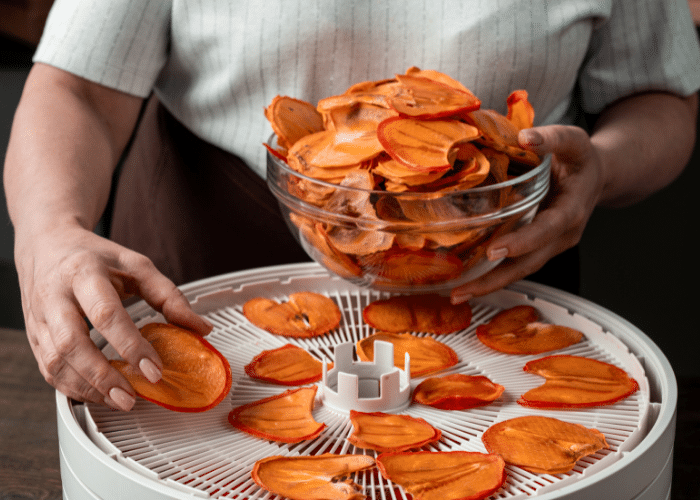
Freeze Dried vs Dehydrated: Accessibility
The main freeze dryer supplier is USA manufacturer, Harvest Right. A medium freeze dryer, that processes about 7 to 10 pounds of fresh food at a time is about $2800US, or about the cost of a new refrigerator. While it is a big investment, the freeze dryer can save thousands of dollars over buying freeze dried food for camping, food storage, and preparedness. If you have a source of farm fresh eggs, meat, or dairy, the payback time can be even sooner, as these are the foods that are the most expensive to buy as freeze dried food from suppliers of preparedness foods.
While more expensive to get started, Freeze dried food has a longer shelf life, increased versatility, and even the ability to preserve animal protein foods more easily, without pressure canning. With freeze dried food the use of oxygen absorbers is essential to protect the food from moisture and oxidation.
Dehydrators, on the other hand, are accessible to almost everyone. You can dehydrate in your oven if you want to just try it out, though a dedicated food dehydrator is uses electricity more efficiently, so it less expensive to operate. Good starting items to dehydrate include fruit like: bananas, apples, or strawberries. This can let you test dehydration as a food preservation method, to see if you like a specific item when it’s dehydrated.
Storage of dehydrated food can be done in any airtight jar, or in Mylar bags. Dehydrated food should be rotated in your food storage so that you don’t end up with 10 year old apples waiting to be used. (10 year old dehydrated fruit can be safe to eat, but it might be a little chewier than you expect.) Freeze dried food, on the other hand, is often preserved and then stored as part of a long term preparedness strategy.
Or look at this post on how to chose a dehydrator. You don’t need to buy the most expensive dehydrator to get one that will do the job. Chris’s favorite dehydrator is the Corsori stainless steel dehydrator, which is her least expensive model! That dehydrator is used for dehydrating just a few trays at a time, as well as to dry food when there’s enough to fill every tray. It maintains a good 165F for jerky and, with tray liners and mesh screens it is very versatile.
If you’re completely new to food preservation, dehydration is a great and accessible way to start. Freeze drying is great for when you’ve done food preservation for a bit, and want specific variety or a specific result. I use my freeze dryer for farm fresh eggs, dairy, and freeze drying prepared meat for long term storage, including liver bites for our dogs. I use my dehydrator for preserving my garden vegetables, cases of seasonal fruit, and quick snacks like fruit bars, fruit leather, and seed crackers or veggie chips.
There is a fairly steep learning curve to using a freeze dryer, however, a dehydrator is ready to go straight from the box. Be sure to always follow the manufacturers instructions for getting your model up and running safely.

Dive into dehydrating food:
If you’ve never dehydrated food before, you can start this year. Nearly any fruit or vegetable can be dehydrated. Dehydration is one of the most accessible methods of food preservation, and you don’t even need a dehydrator to get started. You can even dehydrate meat and full meals using the recipes provided in The Dehydrator Cookbook for Beginners.
- What’s dehydrating, anyway?—Learn the basics of how dehydrating works, and the essential tips and tools you need to get started with your dehydrator.
- Dehydrating from A to Z—Discover how to properly dehydrate fruits and veggies, meat and fish, and even herbs and spices.
- Meals, snacks, and sides—Put your newfound knowledge to the test with recipes for classic dried foods like Kale Chips and Apple Leather, and full meals like Shepherd’s Pie and Curry Chicken with Rice.
- Pro-tips on food preparation, rehydration, and using your dehydrated food to boost flavor and nutrition.
Start drying your own food today with the Dehydrator Cookbook for Beginners.



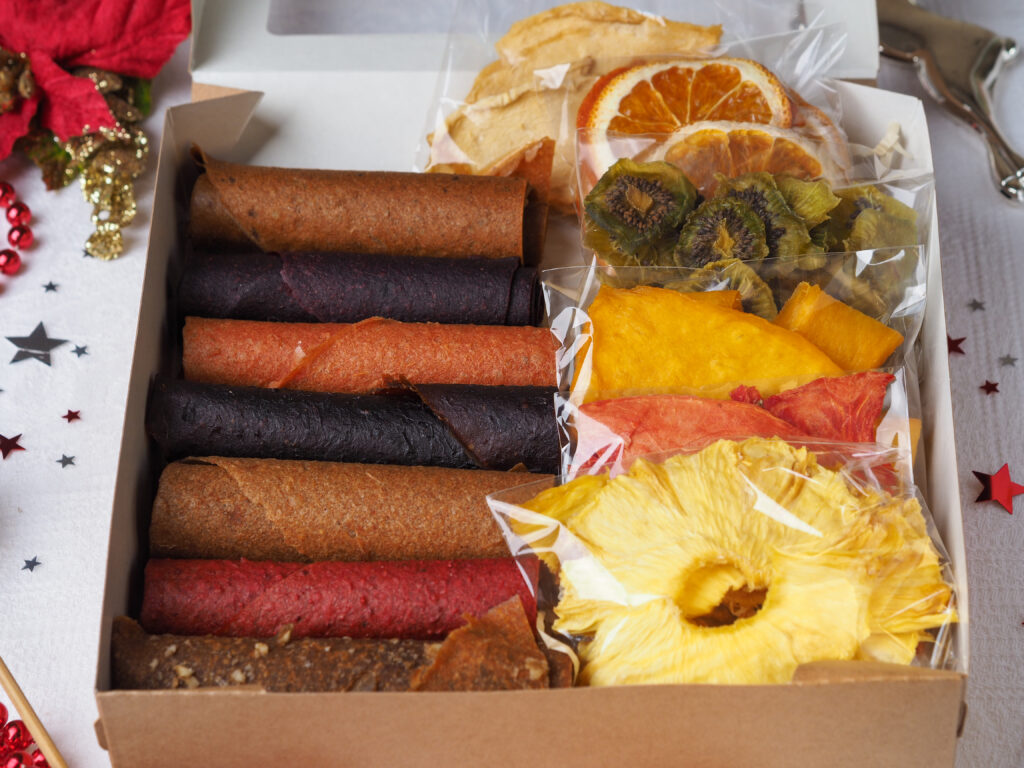



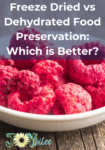
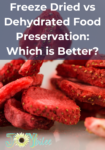
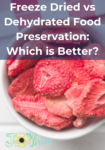
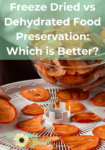

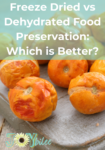
Leave a Reply